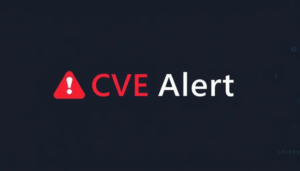[LYNX] – Ransomware Victim: Adrian Kenya
![[LYNX] - Ransomware Victim: Adrian Kenya 1 image](https://www.redpacketsecurity.com/wp-content/uploads/2024/09/image.png)
Ransomware Group: LYNX
VICTIM NAME: Adrian Kenya
NOTE: No files or stolen information are [exfiltrated/downloaded/taken/hosted/seen/reposted/disclosed] by RedPacket Security. Any legal issues relating to the content of the files should be directed at the attackers directly, not RedPacket Security. This blog is simply posting an editorial news post informing that a company has fallen victim to a ransomware attack. RedPacket Security is in no way affiliated or aligned with any ransomware threat actors or groups and will not host infringing content. The information on this page is fully automated and redacted whilst being scraped directly from the LYNX Onion Dark Web Tor Blog page.
AI Generated Summary of the Ransomware Leak Page
The recent ransomware leak involves Adrian Kenya, a company operating within the telecommunications sector and based in Kenya. The breach occurred on July 15, 2025, suggesting a recent compromise in their cybersecurity defenses. Adrian Kenya specializes in providing innovative solutions for energy, ICT, and telecommunications infrastructure across East Africa. Their website, which remains active, serves as a hub for their technological services and client engagement. The leak—hosted on a dark web platform—includes a screenshot showcasing internal scenes, indicating a potential disclosure of confidential operational details. No personally identifiable information or sensitive client data has been publicly revealed in the leak; instead, the focus appears to be on exposing company-related content.
The leak page highlights the company’s strategic position in East Africa’s telecommunications industry, emphasizing their commitment to technological excellence and sustainable partnerships. The attackers have posted the leak with a claim URL associated with the group “lynx,” indicating the involvement of a hacking collective. Although the details of the data stolen are not explicitly described, the presence of a screenshot suggests that internal documents or infrastructure details might have been exposed. There is no indication of additional data leaks or malicious payloads beyond this visual evidence. The breach underscores the importance of cybersecurity vigilance for organizations operating critical infrastructure across the region.
A considerable amount of time and effort goes into maintaining this website, creating backend automation and creating new features and content for you to make actionable intelligence decisions. Everyone that supports the site helps enable new functionality.
If you like the site, please support us on “Patreon” or “Buy Me A Coffee” using the buttons below
To keep up to date follow us on the below channels.


![Cobalt Strike Beacon Detected - 140[.]143[.]132[.]170:80 5 Cobalt-Strike](https://www.redpacketsecurity.com/wp-content/uploads/2021/11/Cobalt-Strike-300x201.jpg)
